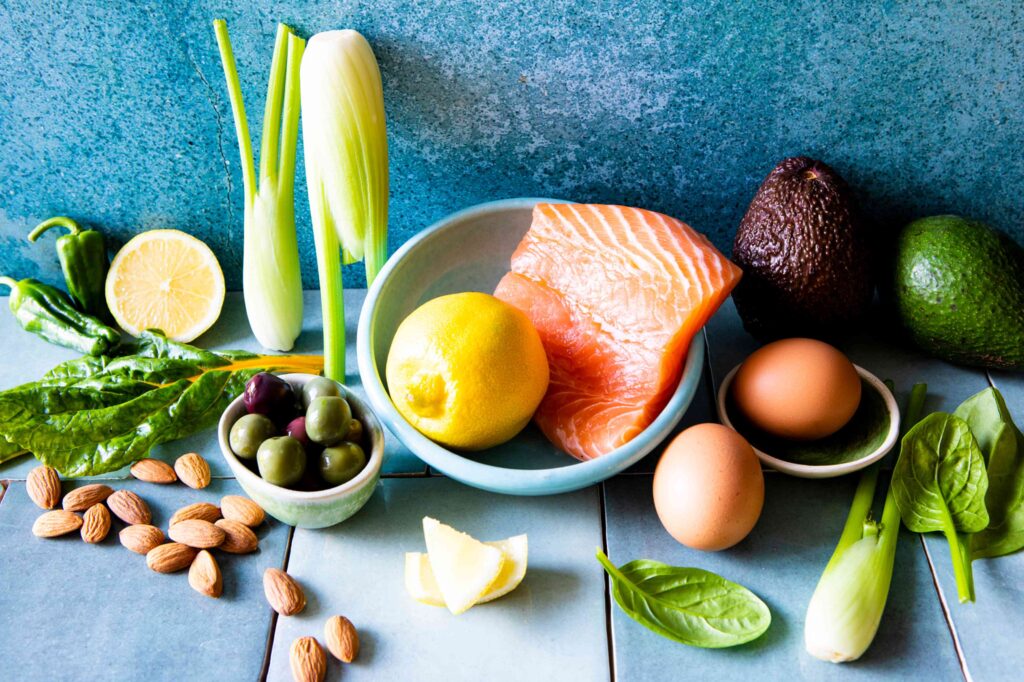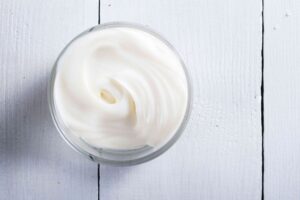:max_bytes(150000):strip_icc():format(jpeg)/Health-Stocksy_txp6c45bfc8Ij2400_Medium_3965535-f77f9fba7efd4f389bb9b3243f91936f.jpg)
Choline is a nutrient that supports important functions in the body, like facilitating a healthy metabolism and building cell membranes. It also helps produce neurotransmitters—chemicals that allow brain cells to communicate. This makes choline essential for brain and nervous system health, especially during a fetus’s development.
Choline must come from dietary sources. Adequate dietary choline intake is 425 milligrams per day for women and 550 milligrams per day for men. People who are pregnant or lactating have higher choline needs.
Choline deficiency is uncommon among adults who eat a variety of foods, but choline supplementation may be recommended for people who are pregnant or lactating.
Most animal-based food sources contain high amounts of choline. Some plant-based foods also contain choline, though in smaller amounts.
Organ meats such as liver, kidneys, heart, and brain contain high amounts of choline in varying quantities.
- Beef kidney: 436 milligrams of choline per 3-ounce serving
- Beef brain: 417 milligrams of choline per 3-ounce serving
- Beef liver: 362 milligrams of choline per 3-ounce serving
- Beef heart: 195 milligrams of choline per 3-ounce serving
Most choline is found in the kidney, which meets 79% of the Daily Value (DV) for choline.
Organ meats provide high levels of iron, zinc, copper, selenium, and folate, but they also contain high amounts of cholesterol. A 3-ounce serving of cooked beef kidney contains 609 milligrams of cholesterol, compared to cooked lean beef, which contains 77 milligrams.
Fish and seafood contain high amounts of choline. Some choline-rich seafood include:
- Salmon: 161 milligrams of choline per half filet (178 grams) of cooked salmon, or 29% of the DV
- Herring: 119 milligrams of choline per fillet (143 grams), or 22% of the DV
- Caviar: 79 milligrams of choline per tablespoon, or 14% of the DV
- Crab: 68 milligrams of choline per 3 ounces (85 grams) of cooked crab without the shell, or 12% of the DV
- Canned oysters: 61 milligrams of choline per 3 ounces (69 grams), or 11% of the DV
- Canned tuna: 50 milligrams of choline per can (172 grams), or 9% of the DV
Fish and seafood contain high amounts of omega-3 fatty acids, which are beneficial for heart, metabolic, brain, and immune health.
Seafood is also high in magnesium and selenium. It’s one of the few food sources of vitamin D. A half fillet (178 grams) of cooked salmon contains 13% of the DV for magnesium, 134% for selenium, and 116% for vitamin D.
Egg yolk is one of the richest sources of choline. A single egg yolk contains 111 milligrams of choline. One large hard-boiled whole egg provides 147 milligrams of choline, about 27% of the DV.
Eggs also contain lutein and zeaxanthin, which are associated with the neurodevelopment of a fetus during pregnancy.
Eggs are very versatile. If you don’t enjoy the taste of eggs, you can incorporate them into baked goods, smoothies (using pasteurized egg yolks), and puddings.
Three ounces (85 grams) of cooked lean beef contains 117 milligrams of choline, 21% of the DV. Beef is also rich in iron, zinc, and selenium. A 3-ounce serving provides 16% of the DV for iron, 35% for zinc, and 51% for selenium.
Poultry also contains choline, with chicken and turkey offering the highest amounts. A 3-ounce cooked chicken breast contains 94 milligrams of choline (17% of the DV), while a 3-ounce cooked turkey breast contains 72 milligrams of choline (13% of the DV).
You can add chicken and turkey to casseroles, stews, and soups.
Edamame is an immature soybean in green pods. You can consume it as green beans or dry soybeans.
A cup of cooked edamame (160 grams) contains 88 milligrams of choline, 16% of the DV. Soybeans are mature dried beans, and one cooked cup (185 grams) contains 82 milligrams of choline, which is 15% of the DV.
Other soy products, such as soy milk, also contain choline. A cup (244 grams) of soy milk contains 58 milligrams of choline, 11% of the DV.
Half a cup (96 grams) of amaranth contains 68 milligrams of choline, or 12% of the DV. Amaranth is a gluten-free grain that also contains plant protein and fiber.
A half-cup serving of amaranth provides 13 grams of protein and 7 grams of fiber. It also meets 57% of the DV for magnesium, 25% for zinc, 32% for selenium, 41% for iron, and 45% for copper.
Half a cup (85 grams) of quinoa contains about 11% of the DV for choline. It’s rich in vitamin E, magnesium, iron, zinc, selenium, and folate.
Quinoa is a gluten-free grain that provides 12 grams of protein per half-cup. You can add quinoa to baked goods, salads, soups, and stews.
A cup of cooked cauliflower contains 58 milligrams of choline, about 11% of the DV. Cauliflower is a cruciferous vegetable like broccoli and Brussels sprouts—which also contain choline.
You can boil, roast, or purée cauliflower. It’s a great ingredient for salads, soups, stews, quiches, and even pizza crusts.
A large (369-gram) cooked red potato contains 61 milligrams of choline, about 11% of the DV.
Consider trying red potato salad with beans. It provides a good amount of choline from both red potatoes and kidney beans.
One ounce (about 30 grams) of wheat germ contains 54 milligrams of choline, about 10% of the DV. Wheat germ also provides protein, fiber, magnesium, zinc, and selenium.
Wheat germ is highly versatile. You can use it as a binding agent in meatballs, as a coating before frying foods, or add it to baked goods, smoothies, and yogurt for extra choline and fiber.
A cup (172 grams) of cooked black beans contains 56 milligrams of choline, or 10% of the DV. They also contain plant protein, fiber, magnesium, iron, zinc, copper, and folic acid.
Canned black beans are ready to use in meals such as soups, stews, salads, and quesadillas. If you’re using canned beans, read the nutrition fact labels for sodium content, as some may contain high amounts of sodium.
Mushrooms contain varying amounts of choline. A cup (145 grams) of cooked shiitake mushrooms contains 53 milligrams of choline (10% of the DV), which is more than what white mushrooms provide.
One large (162-gram) artichoke contains 56 milligrams of choline, 10% of the DV. Artichokes are generally stuffed with other ingredients and cooked. You can also roast them, make purée, or add them to salads, soups, and stews.
Artichokes harvest occurs a few times a year (August, May, October, November, and March), so fresh artichokes may not always be available. In this case, you can opt for canned artichokes.
A cup (224 grams) of milk contains 43 milligrams of choline, about 8% of the DV. It also contains 23% of your daily calcium needs.
Although cow’s milk contains less choline, whey protein powder made from milk is rich in choline. Three scoops of whey protein powder contain 50 grams of protein and 194 milligrams of choline (35% of the DV).
Nuts contain choline in smaller amounts but are still good for snackable doses. An ounce (28 grams) of almonds or 2 tablespoons (32 grams) of almond butter contains about 15 milligrams of choline, which is about 3% of the DV.
Mixed nuts are a great snack but can be high in salt. Check the package and choose those roasted without salt.
Like nuts, seeds also contain some choline. Adding seeds to foods or snacks can contribute your daily choline intake. An ounce (28 grams) of pumpkin seeds contains 18 milligrams of choline, a little more than 3% of the DV.
You can add seeds like flaxseed and sunflower, pumpkin, sesame, and chia seeds to yogurt, smoothies, and baked goods.
Spices such as paprika, ground mustard garlic powder, chili powder, and ground turmeric contain choline in smaller amounts, but help add to a meal’s choline content. A tablespoon of garlic powder contains about 7 milligrams of choline, and a tablespoon of chili powder contains 5 milligrams.
Choline is involved in cell structure, metabolic processes, and brain development. Most animal-based foods contain choline, but plant-based foods also offer choline in smaller amounts.
Choline deficiency is rare; you will likely get enough choline by eating a healthy and balanced diet. Consuming choline-rich foods can boost your daily choline intake.













